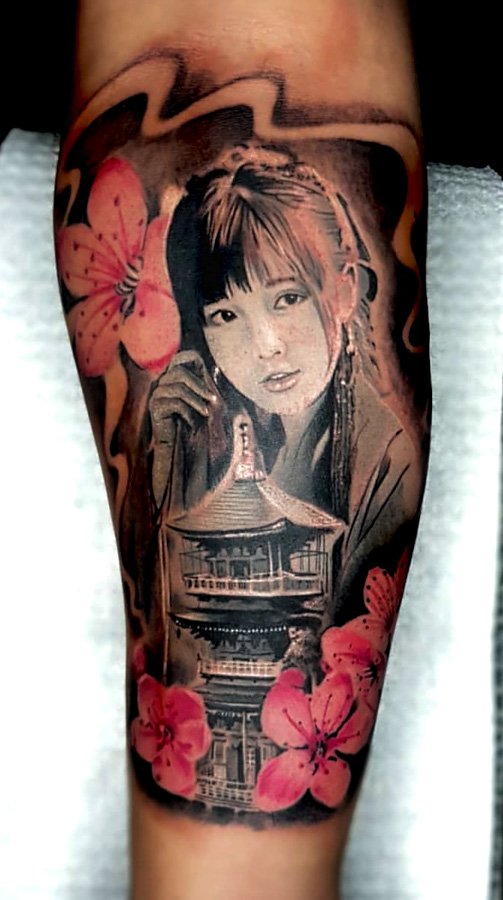The Art Of Color Tattoo Techniques: A Comprehensive Guide
The Art of Color Tattoo Techniques: A Comprehensive Guide
With a passion for learning, we approach the captivating concept concerning The Art of Color Tattoo Techniques: A Comprehensive Guide. We aim to gather intriguing insights and provide fresh angles to the readers.
Video about The Art of Color Tattoo Techniques: A Comprehensive Guide
The Art of Color Tattoo Techniques: A Comprehensive Guide

Tattoos have been a part of human culture for thousands of years, with various civilizations employing different techniques to create intricate designs on the skin. In recent years, color tattoo techniques have evolved significantly, offering a wide range of styles and methods for tattoo artists to express their creativity. This article delves into the world of color tattoo techniques, exploring the different methods, materials, and best practices used to create stunning and long-lasting designs.
Understanding the Basics of Color Tattoos
Before diving into the various color tattoo techniques, it’s essential to understand the basics of how tattoos work. A tattoo is created by inserting ink into the dermal layer of the skin using a tattoo needle. The ink is made up of pigments suspended in a liquid carrier, which is then absorbed by the skin cells. Color tattoos require a range of ink colors, each with its unique pigment composition and undertones.
Types of Color Tattoo Techniques
There are several color tattoo techniques used in the industry today, each with its distinct style and characteristics. Some of the most popular techniques include:
- Realism: This technique involves creating highly detailed and realistic designs using a range of colors and shading techniques. Realism tattoos require a high level of skill and precision, as even the smallest mistake can ruin the entire design.
- Watercolor: This technique mimics the soft, blended look of watercolor paintings. Watercolor tattoos use subtle color gradations and delicate brushstrokes to create a dreamy, ethereal effect.
- Linework: This technique emphasizes bold lines and vibrant colors, often used in traditional and Japanese-style tattoos. Linework tattoos require a high level of precision and control, as the lines must be smooth and consistent.
- Dotwork: This technique involves creating designs using small dots of ink, which are then blended together to form a larger image. Dotwork tattoos can be highly detailed and require a great deal of patience and skill.
- Stippling: Similar to dotwork, stippling involves creating designs using small dots of ink, but with a focus on shading and texture rather than detail.
Materials and Tools Used in Color Tattoo Techniques
To create stunning color tattoos, artists require a range of materials and tools. Some of the most common include:
- Ink: High-quality ink is essential for creating vibrant and long-lasting designs. Tattoo ink is made up of pigments suspended in a liquid carrier, and different ink brands offer varying levels of color consistency and lightfastness.
- Tattoo machines: Tattoo machines are used to insert the ink into the skin. There are various machine types, including rotary, coil, and pneumatic machines, each with its unique characteristics and benefits.
- Needles: Tattoo needles come in different sizes and types, each designed for specific techniques and effects. For example, fine needles are used for detailed work, while thicker needles are used for bold lines and shading.
- Stencils: Stencils are used to transfer the design onto the skin. Stencils can be created using tracing paper or digitally printed onto stencil paper.
Best Practices for Color Tattoo Techniques
To achieve stunning results with color tattoo techniques, artists must follow best practices in terms of design, preparation, and aftercare. Some of the most important tips include:
- Design carefully: Take the time to carefully design your tattoo, considering the placement, size, and color palette.
- Prepare the skin: Ensure the skin is clean and well-prepared for the tattooing process. This includes shaving and disinfecting the area, as well as applying a topical anesthetic if necessary.
- Use high-quality ink: Invest in high-quality ink that is lightfast and non-toxic.
- Work in a sterile environment: Ensure your workspace is sterile and well-ventilated, using disposable needles and ink caps to minimize the risk of infection.
- Provide proper aftercare: After the tattoo is complete, provide clear aftercare instructions to the client, including advice on hygiene, sun protection, and moisturizing.
Closure
Thus, we hope this article has clarified important points on The Art of Color Tattoo Techniques: A Comprehensive Guide. Thank you for your attention and time. Until the next one!.
